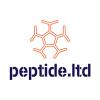
Does PKR inhibitor C16 could give photographic memory safely? Let's find out!
#61
Posted 02 June 2013 - 05:57 PM
#62
Posted 02 June 2013 - 06:01 PM
#63
Posted 02 June 2013 - 06:12 PM
Also I stated farther back that this would cause anxiety because Ive read that it decreases release of gaba(only certain subtypes).
Edited by kevinseven11, 02 June 2013 - 06:20 PM.
#64
Posted 02 June 2013 - 06:34 PM
#65
Posted 02 June 2013 - 06:44 PM
So if it stays intact for a couple of minutes, that is more than enough to swallow the capsule.DMSO crystallizes differently than water. Believe me, you won't cut it easily
I just made quick experiment - I did put empty gelatin capsule in 10ml DMSO - after 3 min I touched it with a spatula and it broke to pieces.
#66
Posted 02 June 2013 - 07:02 PM
Oh ok, at least C16 isn't...DMSO is controversial, try something else.
DMSO is very good for preliminary in vivo study, its stable, non toxic and C16 dissolves in it. Lets move on.
Freezing 5ml syringes full of C16 DMSO solution, would be interesting option. Each syringe would contain roughly one dose.
#67
Posted 02 June 2013 - 07:44 PM
Edited by Megatrone, 02 June 2013 - 07:44 PM.
#68
Posted 02 June 2013 - 08:16 PM
#69
Posted 03 June 2013 - 01:37 AM
Oh ok, at least C16 isn't...DMSO is controversial, try something else.
DMSO is very good for preliminary in vivo study, its stable, non toxic and C16 dissolves in it. Lets move on.
Freezing 5ml syringes full of C16 DMSO solution, would be interesting option. Each syringe would contain roughly one dose.
Now I'm just reading wiki, but this stuff has been shown to be a neurotoxin for developing brains... Is there a reason why it wouldn't also be toxic to adult brains? If it's as toxic to adults as it is to children we're talking brain damage at 21ml of the stuff for a 70kg human. I think we need a discussion here! I want to hear about how this stuff is going to be safe, it would look bad for the community and the potentially advantageous chemical if it harms due to toxicity or creates a synergistic toxicity. Why would you risk that? It would only slow down the development and impair the results. Unless of course the reason for choosing DMSO is for some other purpose which you aren't saying... In either case, we need to have the discussion.
#70
Posted 03 June 2013 - 03:14 AM
What was the t1/2 for C16?
#71
Posted 03 June 2013 - 06:32 AM
But I think JPC16 is going to get whole sample, and dilute it in DMSO according to his calculations.
I will start conversation with JPC16 by PM and invite 3 participants to this experiment, details would be discussed there. More participants are also welcome, but <10.
#72
Posted 03 June 2013 - 08:20 AM
#73
Posted 03 June 2013 - 01:25 PM
#74
Posted 03 June 2013 - 02:18 PM
If the compound can be diluted I'm interested again. No idea about solubility, but isn't Emu Oil quite potent to deliver things transdermally?
Considering it's a food oil, it sounds alot safer than DMSO.
#75
Posted 15 June 2013 - 12:59 PM
http://www.scienceda...30614164858.htm
PKR inhibition related?
Memory became 3 times better. Makes me remember the articles about PKR suppression which stated a nearly 400% increase in recall.
It also acts on a known target of pkr: eIF2a.
#76
Posted 15 June 2013 - 01:08 PM
(By the way Googoltarian, you haven't replied yet to a post I made in our private conversation)
Edited by JPC16, 15 June 2013 - 01:10 PM.
#77
Posted 15 June 2013 - 01:18 PM
#78
Posted 15 June 2013 - 01:31 PM
PKR inhibition which leads to inhibition of eif2 alpha phosphorylation which leads to the prevention of inhibition of translation. And translation is good for memory formation.
#79
Posted 15 June 2013 - 07:40 PM
Could you please quote the study that states the above because this study just came out today.I don't know, but they do the same thing, I think.
PKR inhibition which leads to inhibition of eif2 alpha phosphorylation which leads to the prevention of inhibition of translation. And translation is good for memory formation.
From here. The results seem similar to that of C16 although this seems like a more stable chemical. Anyone have the full study?Memory-Boosting Chemical Identified in Mice: Cell Biologists Find Molecule Targets a Key Biological Pathway June 14, 2013 — Memory improved in mice injected with a small, drug-like molecule discovered by UCSF San Francisco researchers studying how cells respond to biological stress.
The same biochemical pathway the molecule acts on might one day be targeted in humans to improve memory, according to the senior author of the study, Peter Walter, PhD, UCSF professor of biochemistry and biophysics and a Howard Hughes Investigator. The discovery of the molecule and the results of the subsequent memory tests in mice were published in eLife, an online scientific open-access journal, on May 28, 2013. In one memory test included in the study, normal mice were able to relocate a submerged platform about three times faster after receiving injections of the potent chemical than mice that received sham injections. The mice that received the chemical also better remembered cues associated with unpleasant stimuli -- the sort of fear conditioning that could help a mouse avoid being preyed upon. Notably, the findings suggest that despite what would seem to be the importance of having the best biochemical mechanisms to maximize the power of memory, evolution does not seem to have provided them, Walter said. "It appears that the process of evolution has not optimized memory consolidation; otherwise I don't think we could have improved upon it the way we did in our study with normal, healthy mice," Walter said. The memory-boosting chemical was singled out from among 100,000 chemicals screened at the Small Molecule Discovery Center at UCSF for their potential to perturb a protective biochemical pathway within cells that is activated when cells are unable to keep up with the need to fold proteins into their working forms. However, UCSF postdoctoral fellow Carmela Sidrauski, PhD, discovered that the chemical acts within the cell beyond the biochemical pathway that activates this unfolded protein response, to more broadly impact what's known as the integrated stress response. In this response, several biochemical pathways converge on a single molecular lynchpin, a protein called eIF2 alpha. Scientists have known that in organisms ranging in complexity from yeast to humans different kinds of cellular stress -- a backlog of unfolded proteins, DNA-damaging UV light, a shortage of the amino acid building blocks needed to make protein, viral infection, iron deficiency -- trigger different enzymes to act downstream to switch off eIF2 alpha. "Among other things, the inactivation of eIF2 alpha is a brake on memory consolidation," Walter said, perhaps an evolutionary consequence of a cell or organism becoming better able to adapt in other ways. Turning off eIF2 alpha dials down production of most proteins, some of which may be needed for memory formation, Walter said. But eIF2 alpha inactivation also ramps up production of a few key proteins that help cells cope with stress. Study co-author Nahum Sonenberg, PhD, of McGill University previously linked memory and eIF2 alpha in genetic studies of mice, and his lab group also conducted the memory tests for the current study. The chemical identified by the UCSF researchers is called ISRIB, which stands for integrated stress response inhibitor. ISRIB counters the effects of eIF2 alpha inactivation inside cells, the researchers found. "ISRIB shows good pharmacokinetic properties [how a drug is absorbed, distributed and eliminated], readily crosses the blood-brain barrier, and exhibits no overt toxicity in mice, which makes it very useful for studies in mice," Walter said. These properties also indicate that ISRIB might serve as a good starting point for human drug development, according to Walter. Walter said he is looking for scientists to collaborate with in new studies of cognition and memory in mouse models of neurodegenerative diseases and aging, using ISRIB or related molecules. In addition, chemicals such as ISRIB could play a role in fighting cancers, which take advantage of stress responses to fuel their own growth, Walter said. Walter already is exploring ways to manipulate the unfolded protein response to inhibit tumor growth, based on his earlier discoveries. At a more basic level, Walter said, he and other scientists can now use ISRIB to learn more about the role of the unfolded protein response and the integrated stress response in disease and normal physiology. Additional UCSF study authors are Diego Acosta-Alvear, PhD, Punitha Vedantham, PhD, Brian Hearn, PhD, Ciara Gallagher, PhD, Kenny Ang, PhD, Chris Wilson, PhD, Voytek Okreglak, PhD, Byron Hann, MD, PhD, Michelle Arkin, PhD, and Adam Renslo, PhD. Other authors are Han Li, PhD, and Avi Ashkenazi, PhD, from Genentech; and, Karim Nader, PhD, Karine Gamache, and Arkady Khoutorsky, PhD, from McGill University. The study was funded by the Howard Hughes Medical Institute.
Edited by yadayada, 15 June 2013 - 07:44 PM.
#81
Posted 15 June 2013 - 07:47 PM
https://en.wikipedia.org/wiki/ISRIB
ISRIB is an experimental drug which acts as a selective inhibitor of the eIF2α kinase PERK, and reverses the effects of eIF2α phosphorylation with an IC50 of 5nM. It was discovered by a group at the University of California through a semi-automated screening of a large library of small molecules. Since eIF2α phosphorylation is known to be involved in memory formation, ISRIB was tested to see whether it would be active in vivo, and was found to readily cross the blood-brain barrier, with a half-life of 8 hours. Subsequent testing found ISRIB to produce significant nootropic effects in mice, as measured by enhancement of spatial and fear-associated learning in standard water maze and conditioned environment tests.[1]

#82
Posted 15 June 2013 - 07:48 PM
#83
Posted 15 June 2013 - 07:55 PM
#84
Posted 15 June 2013 - 07:57 PM
#85
Posted 15 June 2013 - 08:01 PM
#86
Posted 15 June 2013 - 08:03 PM
#87
Posted 16 June 2013 - 12:26 AM
#88
Posted 16 June 2013 - 12:47 AM
#89
Posted 16 June 2013 - 02:43 AM
#90
Posted 16 June 2013 - 04:31 AM
Also tagged with one or more of these keywords: c16, photographic memory, pkr, safe, inhibitor, ultimate, nootropic
Science & Health →
Brain Health →
Nootropic Stacks →
how would you describe Cerebrolysin to a person unfamiliar to nootropics?Started by davidwood557 , 01 Oct 2024 |
|

|
||
Round Table Discussion →
Business →
Retailer/Product Discussion →
J 147 Powder to Treat Alzheimer’s DiseaseStarted by Peptide.ltd , 18 Apr 2024 |
|

|
||
Science & Health →
Brain Health →
Montelukast?Started by mp_double , 25 Jan 2024 |
|

|
||
Science & Health →
Supplements →
Vorinostat (HDAC inhibitor) source?Started by Guest_Funiture2_* , 31 Mar 2023 |
|

|
||
Science & Health →
Lifestyle →
Dental Health →
is teeth bleaching safe?Started by ironfistx , 12 Jul 2022 |
|

|
4 user(s) are reading this topic
0 members, 4 guests, 0 anonymous users















































